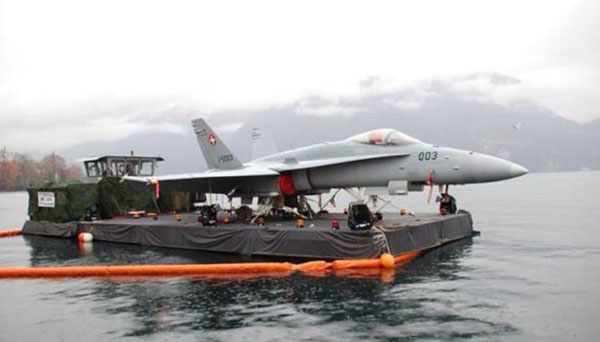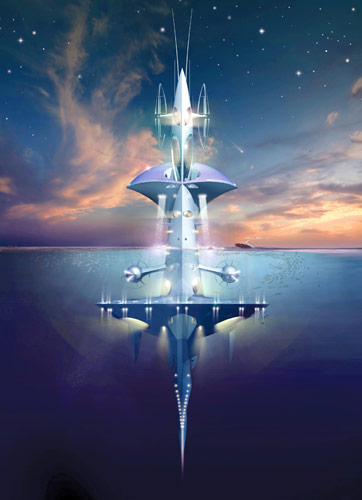Note: I borrowed this from my play at Wesworld...
Nation: Empire of Bharat
Ship:
Bhima/Otta
Type: Collier/Aircraft Carrier/Repair Ship
Displacement: 9,387 tonnes normal
Collier
Laid down in early 1915, the collier
Bhima was the fourth of six medium colliers to be built for the Bharatiya Nau Sena. The class was capable of carrying four thousand tonnes of coal at a speed of fifteen knots. Two rows of scoop-shovels accessing small hatches amidships allowed coal to be transferred to ships tied up on either beam. The class would permit the projection of Indian naval influence across the width of the Indian Ocean and into the western Pacific.
A support role for raiding operations was one envisioned role for these ships. While Bharat did not formally take part in the Great War, there is some evidence that the older vessels of the class did supply the German cruiser
Emden from time to time during her long rampage in the Indian Ocean.
Bhima’s older sisters also kept the navy supplied with the coal it needed to fight the larger Dutch East Indies Fleet to a standstill in 1916-17, the lead ship,
Godavari, being sunk by a Dutch submarine during the war.
Bhima herself was, however, only completed a few months after the Treaty of Honalulu brought the conflict to a close. Three years of uneventful service followed as she was based in the Central Maritime District. In mid-1920, she was caught up in a cyclone that inflicted modest damage to her upper works and entered the shipyard at Chennai for repairs. As it turned out, it would be over a year before she returned to service.
Experimental Aircraft Carrier
Bharati naval strategy was in flux in 1920. The old notion of a cruiser navy intended for raiding operations had sufficed while the strategic objective was to disrupt foreign incursions into Bharat. However, that goal was being replaced by one in which Bharat and the other independent nations of Asia would rally together to drive imperialist powers out of their Asian colonies. That sort of goal would require a true blue-water navy centred on capital ships.
This new strategy led Bharat to be involved in the naval arms limitation talks that resulted in the Global Naval Arms Limitation Treaty of 1920. A major and unavoidable risk of signing on to this treaty was that Bharat had not built capital ships or carriers, and would likely find itself stuck with a white elephant for twenty years the first time it made the attempt. With an alliance being forged with South Africa over the latter half of the year, fears of botching a capital ship faded as the prospect of South African technical assistance became stronger. However, the South Africans were only just starting to think of aircraft carriers themselves.
During the course of negotiations, it became evident that the treaty would include a clause allowing for existing experimental aircraft carriers to be replaced by the mid-twenties - quite a bit sooner than would be possible for a ship built after the treaty came into effect. The navy decided that it was better off to start a rudimentary carrier program too soon, and experiment with a platform they could legally replace in five years, than to wait, do more research, and hope the first try was up to twenty years of service.
Finding a ship to convert was not so easy, though. The merchantile losses of the Bharati/Dutch war had not been made good, and prices for freighters and passenger ships were still relatively expensive. The navy contemplated completing the cruiser
Male, then under construction, as a small hybrid. It contacted Britain about obtaining a battlecruiser that had already been converted, but realized that it would be too expensive to operate. Then the admiralty's eyes fell upon
Bhima.
The reconstruction began in the fall. The derricks and superstructure were ripped apart and replaced with a basic hanger serviced by two lifts. A full length flight deck, sloping downward at the bow, was installed. Exhaust was diverted to a pair of funnels abaft the flight deck aft. Guns and search lights were installed in four sponsons, and a heavy pole mast installed on the port side for lookouts and signal lamps. No island was contemplated, the ship’s command facilities being located in a bridge overlooking the bow. Although
Bhima was technically completed in 1921, work continued on portions of the ship through to early 1922.
The ship was re-commissioned under a new name, the navy having decided that it would name aircraft carriers after weapons. The choice of name -
Otta (the term for a heavy club) was rumored to be a jab at the new carrier’s bulky form and slow speed.
As a carrier,
Otta was far from ideal. Her machinery had not been replaced, so she was still limited to fifteen knots, and dependent on coal that sent plumes of dark smoke rising from her funnels - smoke that often obscured the aft deck and caused more than one landing accident. Her airgroup was tiny, peaking at twenty-four aircraft, and the small deck and slow speed restricted the size of aircraft that could be carried. The ship’s living spaces were as spartan as any warship to see service in the navy, and the lack of an island made it difficult to control flight operations. On the other hand, she was a good sea boat and had a slow roll that helped those flight operations.
Over the next few years,
Otta would be based primarily in the Western Maritime District at Mumbai. The navy used her to develop operating procedures: how and where to fuel and arm aircraft, how to use the aircraft, how to escort the carrier, and so forth. She was employed in naval exercises with South Africa and with Bharat’s SATSUMA allies. The ship’s inadequacies led to her being used boldly, even aggressively, both in exercises and in a strike against Danish warships during the Andaman Sea Crisis of 1924. Thought not materially effective - four Dhairya bombers being lost in exchange for a single hit on a destroyer - it gave Bharat, Denmark and other nations a sense of what an aircraft carrier could accomplish.
All of this operational experience led to the design of Bharat’s first purpose-built carrier,
Urumi, which was laid down in 1925. Larger, faster, armored, and better armed,
Urumi’s completion in mid-1927 meant that
Otta had to be taken out of service. There was considerable debate about whether to convert her to a seaplane tender, aircraft transport, repair ship, or whether to just scrap her. Consensus at the time was that a repair ship was most urgently needed, and that a seaplane tender, while useful, could be built effectively on a much smaller hull. Thus,
Otta entered a drydock for another extensive reconstruction.
Repair Ship
This time,
Otta’s machinery was replaced, with smaller but equally effective oil-fired engines and increased bunkerage being added. Crew quarters were improved upon, and portions of the flight deck were removed to make way for workshops and warehouses. Two large cranes were installed such that they would have access to the elevators and the hanger-turned-warehouse areas they serviced. Two smaller cranes were placed in a derrick amidships to access small shuttered hatches servicing the workshops there. Around the base of the derrick was built a central observation area to coordinate the transfer of equipment to and from the ship.
The aft armament was retained, as were the light guns forward. The forward 10.5 cm guns were removed, one being re-sited forward on the centreline, the other being used for an anti-submarine launch being built nearby. The spaces left behind by the 10.5 cm guns were filled auxiliary conning stations. The pole mast once sited in the forward port gun sponson was moved to the leading edge of what had been
Otta’s flight deck, placing it outside the turning radius of the heavy cranes.
Otta’s re-commissioning in mid-1928 was followed by a shakedown cruise, and then a prompt deployment to the Red Sea to assist the monitor
Chandragupta after its engagement with a rebellious Filipino cruiser at the beginning of the Filipino Civil War. The ship patched numerous holes from six inch shells, replaced equipment such as a twin 10.5 cm gun mount, and repaired the monitor’s gutted crew quarters, taking the monitor’s entire surviving complement aboard for the duration. After several weeks, the two ships sailed to Mumbai where dockyard facilities undertook tasks
Otta could not, such as un-jamming the monitor’s 25 cm triple turret.
Otta sailed east to provide forward support to Bharati warships involved in the Filipino revolution, arriving on station in January 1929. Over the next several months,
Otta would repair a number of light craft damaged in action against other mutinous Filipino warships.
Just three years later, with Bharat now backing Hedjaz in its war with the Kingdom of Saud,
Otta deployed back to the Red Sea once more. Here she would, again, service light craft but also refitted several Hedjazi trawlers and coasters into netlayers and harbour defence vessels. She would remain on station until the ceasefire was negotiated in 1933.
Otta would subsequently return to the Western Maritime District for a mercifully quiet decade as the Pax Europa took hold and the Bharati government's adventurism waned. The Bharatiya Nau Sena supplemented her with a purpose-built repair ship,
Luharakhana, in 1935, and then finally replaced her with another vessel,
Sahara, in 1943.
Otta was deleted from the Navy List and transferred to the Imperial Naval History Centre at Chennai. She remains preserved in her final guise at Pier Fourteen, adjacent to the pre-dreadnought
Ashoka.
Below: Sketch of Otta as collier, carrier, and repair ship.



